Find out how Skimlinks, a Taboola company, can help with your affiliate marketing strategy. Learn more here.
Year after year, consumers eagerly await Amazon Prime Day in July and Amazon Prime Big Deal Days in October, meticulously preparing their shopping lists while remaining open to discovering new items on sale. This year was no different. In the 45 days leading up to Prime Day, which spanned July 16-17, our readership data on the Taboola network revealed mind-boggling spikes in pageviews versus the last 45 days for ‘Amazon Prime Day’ (+3521%) and ‘Prime Day’ (+6463%). This indicates that consumers on the open web were explicitly seeking out content that included these phrases and were highly likely to engage with campaigns and articles that incorporated them.
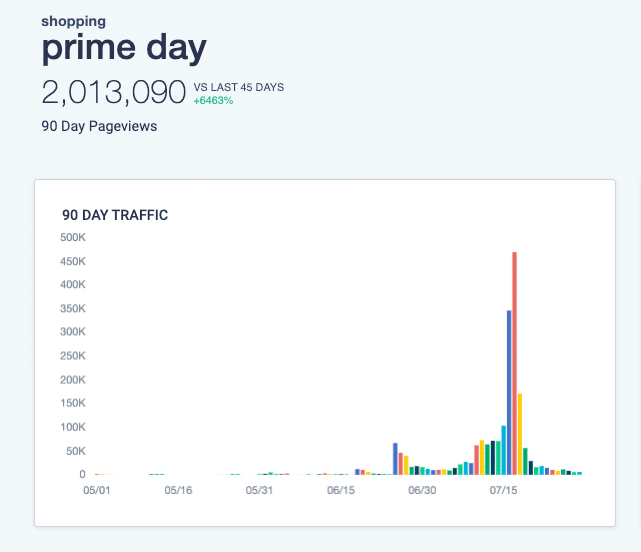
According to Skimlinks, a platform that assists publishers in earning commissions from the sales generated through the links on their websites, the US, Australia, Great Britain, Germany, and Canada topped the charts for Prime Day-focused content clicks. Similarly, the top countries generating clicks for Big Deal Days content included the US, Australia, Great Britain, Canada, and Singapore. Connexity‘s data also revealed that this year, consumers displayed value-seeking tendencies, opting for cheaper items and household essentials over big-ticket buys. However, that doesn’t mean they spent less; the opposite is true. US shoppers alone spent a record $14.2 billion online during Amazon’s two-day Prime event, up 11% year over year. Prime Day and Big Deal Days have cemented their status as retail cornerstones, inspiring other major retailers to launch their own mega-sales to tap into the shopping fervor. As you prepare for the months ahead — and the make-it-or-break-it Q4 holiday season — knowing which products consumers want is like having a treasure map that leads directly to the “Buy Now” button and a boost in revenue. Well, advertisers and publishers, get ready because we have the map and compass for you, plus examples! Leverage the insights below to prepare your native ad campaigns, landing pages, articles, and guides. Doing so will maximize your reach and revenue for the big shopping events of the holiday season — Cyber Five is right around the corner! — and beyond.
See our Amazon Prime Day 2025 Tips for SMB Advertisers.
The Rise of Prime Day & Big Deal Days Competitors
As consumers enter a shopping mindset fueled by the pursuit of the best deals, it only makes sense for other retailers to get in on the action and ride the revenue wave. This phenomenon is known as the ‘halo effect.’ During this year’s Prime Day, nearly 30% of major US retailers and e-commerce sites ran competing sales events, resulting in a 73% increase in transactions compared to the week before the shopping extravaganza. Walmart has emerged as a formidable competitor to Amazon, and according to Connexity, 35% of Prime Day shoppers also shopped at Walmart’s deals event. Nordstrom’s much-anticipated Anniversary Sale provided ample opportunity to compare prices and score deals from highly coveted brands. Abercrombie & Fitch, which offered deep discounts on summer and fall clothes, also successfully competed with Prime Day.
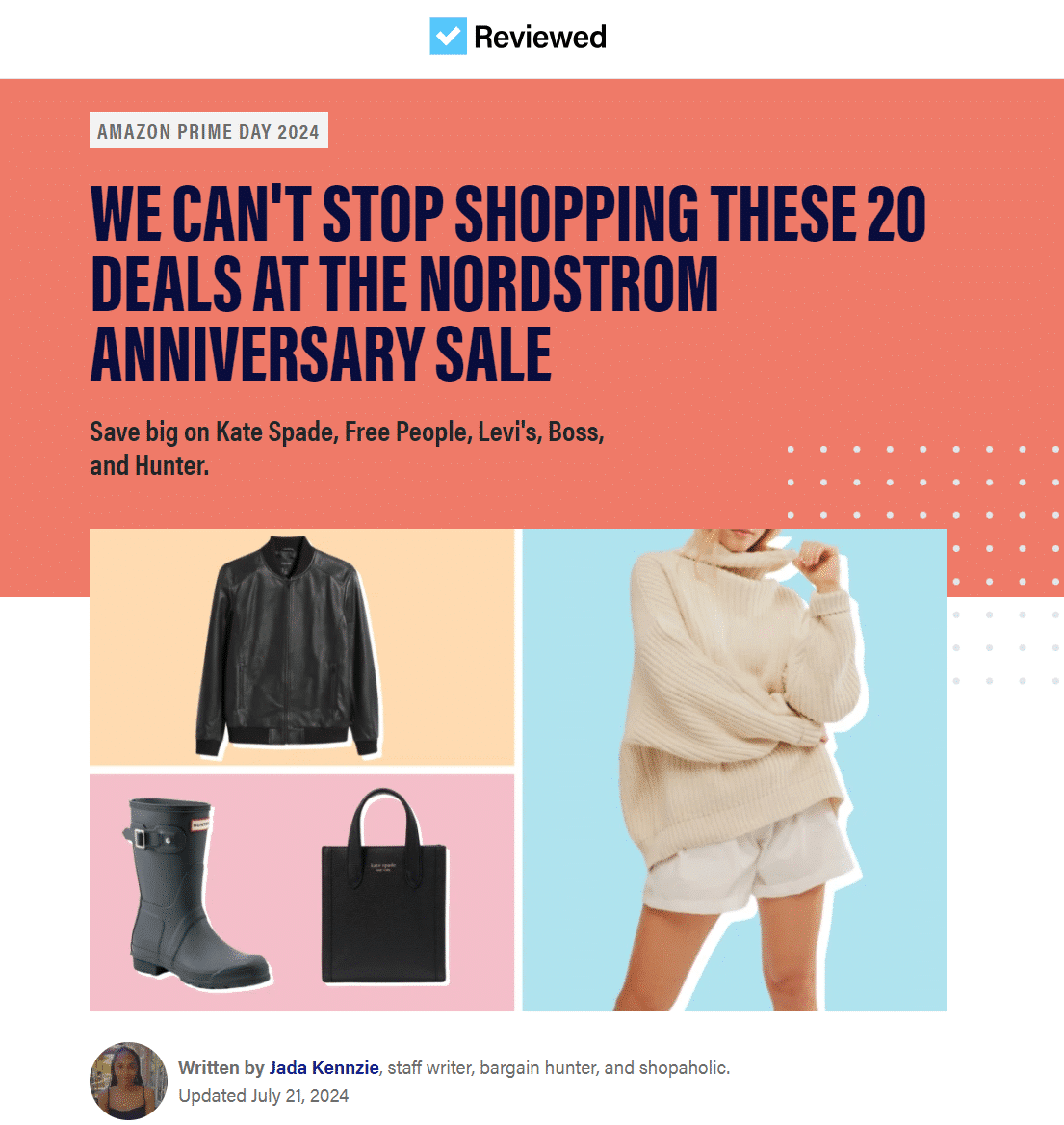
(Source)
Still, when it comes to competitor participation, Prime Day was actually outshone by its sister sales event, Big Deal Days, which ran from October 8-9. For the second year in a row, clicks and order values on alternative sales countering Prime Big Deals Day outpaced those running adjacent to Prime Day on the Skimlinks network. Walmart, for example, once again saw a boom in sales from its own event, which ran from October 8-13. Meanwhile Wayfair hosted its own Way Day sale and Kohl’s joined in with its Three Days of Deals, picking up coverage from several major commerce content publishers:
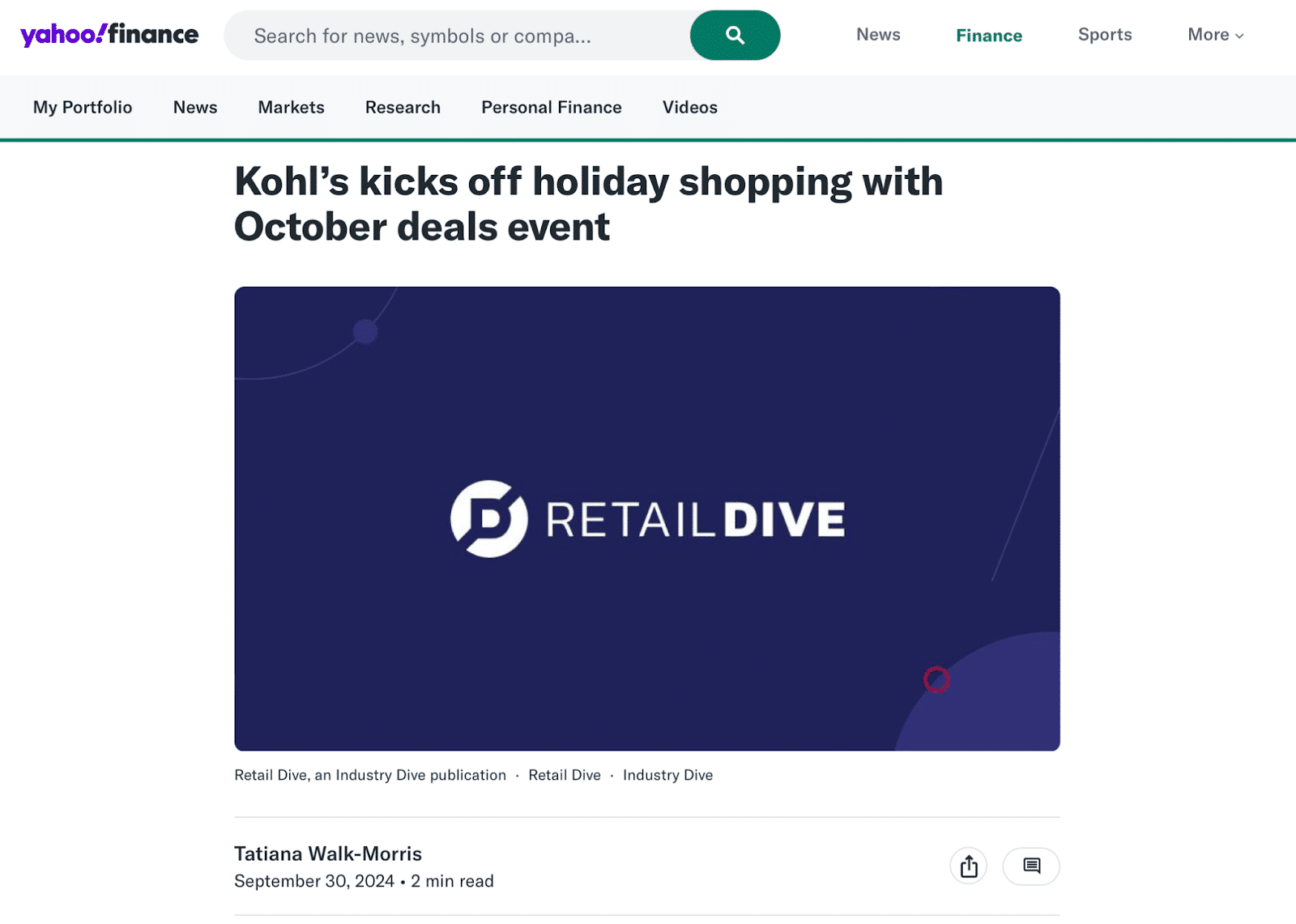
(Source)
Top Categories and Products Purchased
Skimlinks data reveals which products flew off the virtual shelves during the two weeks surrounding Prime Day (July 9-22) and Big Deal Days (October 1-14), offering valuable clues for optimizing your 2024 holiday campaigns and content strategy. During Big Deal Days, for example, major merchants successfully tied their sales to the holiday season ramp-up, driving early purchases of electronics, home goods, and trendy fashion items that are often associated with Black Friday. Let’s take a closer look at the top performers.
Household Goods: From Essentials to Elevated Picks
Household products reigned supreme. Throughout both landmark sales events, consumers sought everyday items and products that enhanced their daily lives, including: Cleaning Products: These items are always needed and don’t expire, so when they go on sale, customers stock up. Car Cup Holder Expanders: With more consumers opting for reusable tumblers over single-use plastic bottles, this little invention makes driving and sipping much more convenient. Cordless Vacuums: Consumers are willing to invest in cleaning tech that makes dreaded chores easier. HEPA Air Purifiers: Whether they’re filtering pet dander, unwanted odors, pollen, or smoke, air purifiers can help consumers breathe easier. Kitchen Knife Sets: Knife sets can elevate any home kitchen but also put a dent in your wallet, so customers took this opportunity to buy their own for a good price. Bamboo Sheets: On the hunt for bedding that’s both cozy and sustainable, shoppers gravitated towards popular bamboo sheet sets. Ergonomic Desk Chairs: With many still working from home and students preparing for the school year, both simple and luxury desk chairs were popular picks.
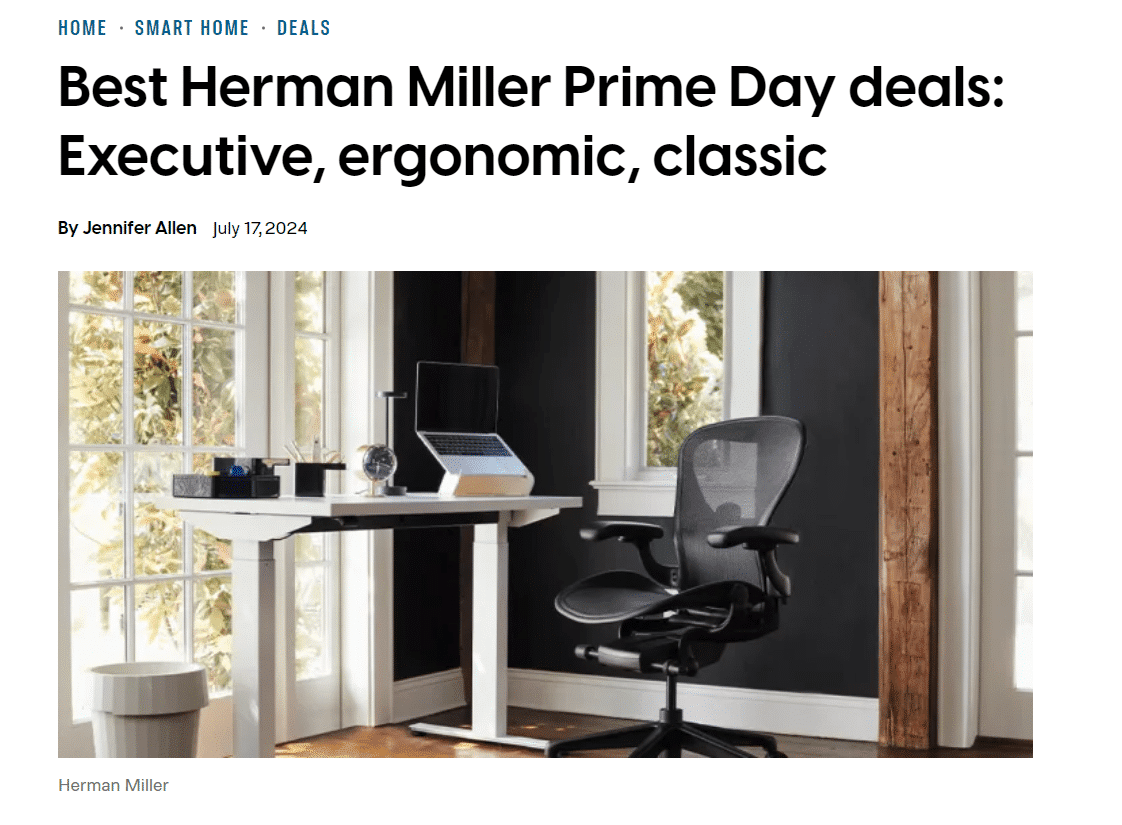
(Source)
High-Value Purchases: Big Discounts on Trendy Products
When it came to bigger-ticket items, hype combined with value drove clicks and purchases. Interestingly, the top sellers during Amazon Prime Day were all multi-functioning products while the top sellers during Big Deal Days included trendy fashion picks. Infant Car Seat/Stroller Systems: These types of two-in-one products are easier on parents and their wallets, especially when they go on sale. Fitness Trackers: Consumers couldn’t resist deals on fitness trackers that double as jewelry or watches. Smokeless Grill and Air Fry Toaster Oven: Space-saving multifunctional small kitchen appliances were snapped up thanks to deep discounts. Tumblers: Viral drinkware from last year still had a strong hold on audiences as they flocked to sales on their favorite trendy tumblers. Women’s Sandals: Summer might be over but certain sandals are still trending. And customers pounced on timely deals to keep their feet cozy even into the cooler seasons. Menswear Tops: A notable discount on poplin shirts for the fall made an impact among menswear shoppers. Leopard-print Fashion: Sales on leopard-print garments from top US publishers are up 638% over the same period in Q4 2023. This surge has also helped year-to-date sales spike 72% compared to 2023. Retailers like Mango US, Ganni, and J.Crew, for example, are seeing cardigans, dresses, denim fits, and accessories fly off the digital shelves.
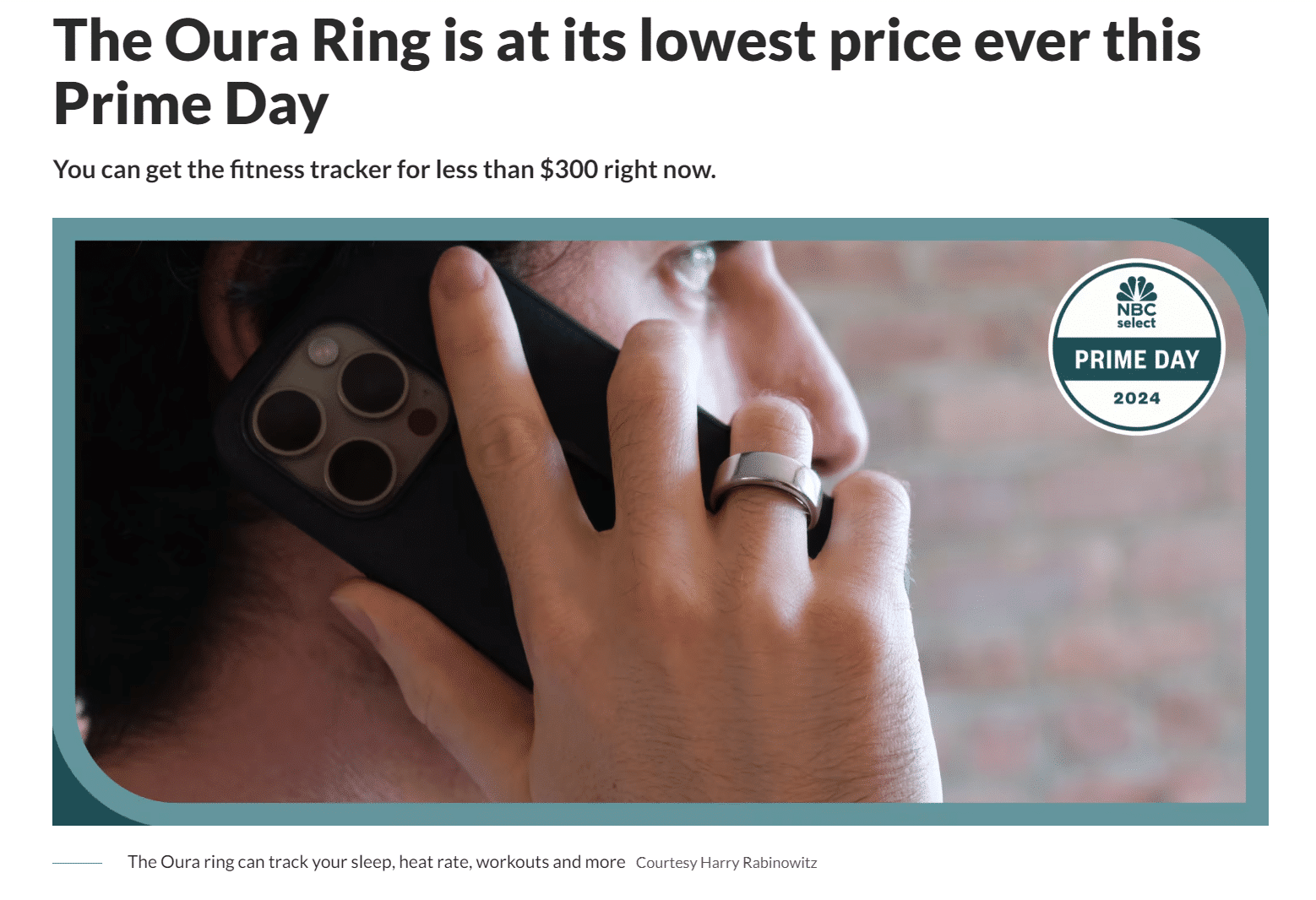
(Source)
Electronics: Powered-Up Deals
Electronics consistently dominate sales events, and this year was no exception. Top products included: Smart TVs: Eye-popping discounts on high-end TVs with all the bells and whistles, especially from retailers like Walmart, made them a top purchase. Noise-Canceling Headphones: Whether for work, study, or play, consumers took advantage of these hardly on-sale items. Portable Power Stations: These small on-sale battery banks keep devices charged up and enhance shoppers’ on-the-go lifestyles.
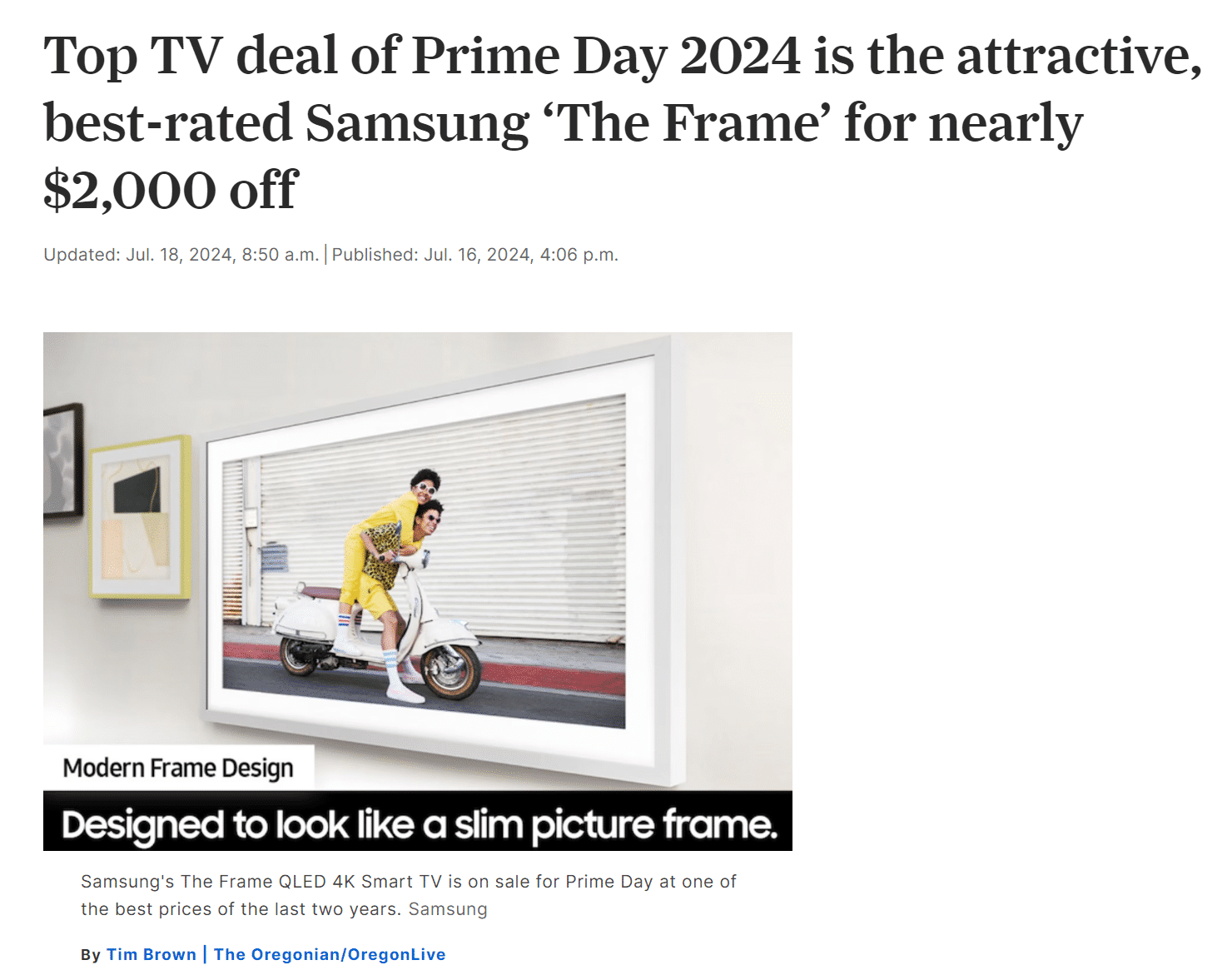
(Source)
Holiday Decor: Getting Into the Spirit of the Season
Even though it seems holiday decorations hit stores earlier each year, July might still be too soon to start selling seasonal decor. By the time Amazon Prime Big Deal Days came around in October, however, shoppers were ready to start decking the halls with:
- Advent Calendars: Clicks on related content were up 120% over the past month as customers sought out their favorite advent calendars from retailers. Specifically, trending URLs included keywords like ‘Best Luxury Advent Calendars,’ ‘Best Candle Advent Calendars,’ and ‘Best Jewelry Advent Calendars.’
- Artificial Christmas Trees: Building on strong performance in 2023, articles focused on artificial Christmas trees continue to dominate holiday decor content. Among trending URLs, we saw catchy headlines like ‘How to Shop for Artificial Christmas Trees,’ ‘Best Artificial Christmas Trees,’ and ‘Artificial Christmas Trees Worth Your Money.’
Maximize Your Opportunity: Key Takeaways for Advertisers and Publishers
Now that you know what the top sellers were from Prime Day, Big Deal Days, and competing sales, let’s look at how you can apply these insights to make the most of your 2024 holiday marketing campaigns. Advertisers: Use the data from these events to highlight similar products for holiday shoppers. For example, the numbers clearly show that audiences are actively seeking deals on household goods, high-ticket tech products, and trendy fashion purchases. Given the explosive sales and halo effect, advertisers should also prepare native ad campaigns in advance and be ready to capture consumer attention in the lead-up to Cyber Five. A well-defined strategy that takes consumers from awareness to consideration to purchase is essential to making the most of your ad spend and increasing ROI, especially during this competitive season. In your campaign headlines, stand out by emphasizing savings, limited-time offers, and cost-saving benefits like free shipping and returns, which resonate with deal-seeking shoppers. Publishers: It’s time to start developing a content strategy and defining the articles that will help consumers discover the best products and deals during the holidays. Explore various content angles, including retailer-specific deal guides, vertical-specific deep dives, and demographic-targeted gift guides (think fashion for teens or products for moms). Also, pay attention to your titles and URLs, incorporating high-opportunity keywords and specific retailer names to boost visibility, traffic, and sales. Confirm you have active affiliate accounts with all major retailers and e-commerce sites. Not sure how to phrase your campaign or article title to make the most impact? Debating about which image will attract eyeballs? Our Taboola Trends tool has you covered with up-to-date data-backed answers!



